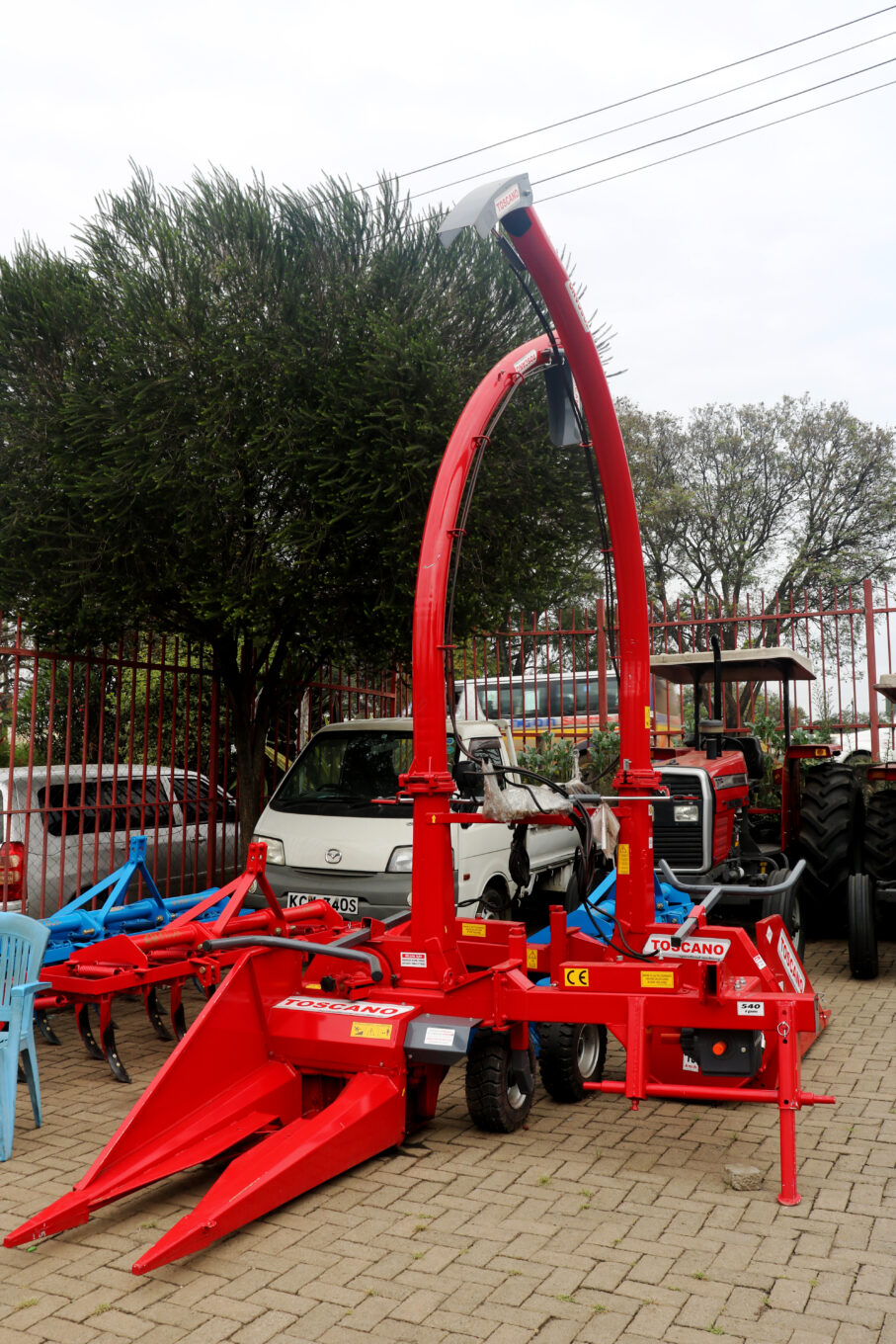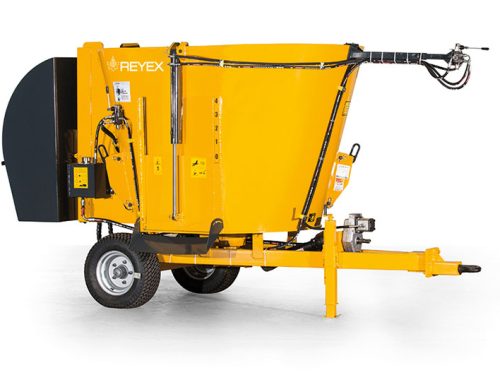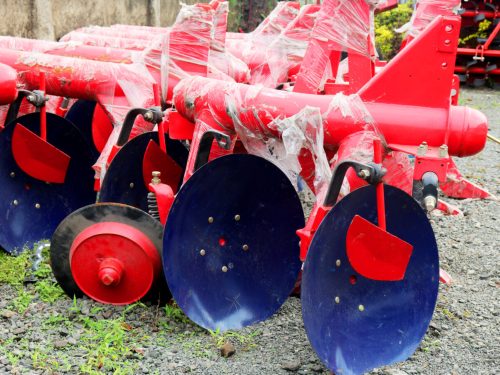Description
FORAGE HARVESTERS FOR SALE.

A forage harvester is a farm implement for harvesting forage plants to make silage. This is achieved by chopping the forage into smaller pieces then compacting together in silage bunker for fermentation to provide feed for livestock.
Forage machines are preferred by farmers due to their high quality feed value that they deliver that enables improved productivity of their animals in terms of milk production for The machines are able to make a variety of feed from different crops, including whole-plant maize silage, and hay among others. Though, the machines are complex and expensive for a producer to own.
The primary purpose of a forage harvester is to collect chaff, but it can also collect other types of materials which a normal Harvester cannot collect. The rows are left to dry until the desired moisture content is reached. The rows are then pushed together with a merger or rake. The final step of the process is running a forage harvester through the merged rows, processing the crop into a truck and trailer or wagon, then hauling it to a dairy or feedlot to be stored until ready to feed.
Design components of forage harvesters
Forage harvesters are complex machines designed with different systems each of have different functions. They include the following:
-
Rotary header for maize silage
Fitted with moving cutting parts and guiding elements. It feeds the harvester with a steady, even flow of cut and processed material.
-
Pick up for grass silage
The tines on this implement ensure a high performance grass pick-up and the auger feeds the feed inside the harvester.
-
Feed rollers and feeding unit
This unit presses and packs the drawn in crop flow thanks, in particular, to a set of upper and lower feed rollers. Their operating speed determines the silage output cutting length.
-
Drum and cutting chamber
The conditioned crop flow is chopped in the rotor, which is equipped with adapted knives and shear bars.
-
Sharpening units
To account for the heavy load placed on the rotor knives, this automatic system regularly sharpens the knives via a moving sharpening stone.
-
Transfer units
Once chopped, the crop flow moves through an adapted chute to the next sub-assembly.
-
Feed cracker
- For maize harvests, this sub-assembly cracks the kernels within cracker rollers which rotate in opposite directions.
-
Accelerator
Equipped with a spout transition and accelerator paddles, this sub-assembly increases crop flow speed for improved offloading.
-
Discharge spout
The discharge spout guides the accelerated crop flow, usually into a trailer positioned alongside the operating harvester.
How a forage harvester works.
A forage harvester works through either maize or silage grass. Grass is fairly straight forward with windrows picked up by the forage harvester and chopped with reciprocating blades before it’s discharged into a wagon running beside the machine.
The length of the chopped forage is important, and maize kernels and stalk sections need to be cracked open otherwise they pass through the animal undigested.
The kernels is a pair of grooved rollers 2mm apart that rotate at different speeds so the chopped material that passes between them is torn and shredded.
Before it gets to that process, up to 12 rows of maize are dragged through the harvesting head that’s a series of bladed wheels rotating in opposite directions.
This violent process hacks and gathers a maize plant into a stream of material that’s pressed through rollers and into a horizontal knife roller.
The knives chop the material into even lengths while also forcing it up into a discharge chute where another fast-spinning roller, called an accelerator takes over.
The accelerator is purely designed to create enough velocity for the forage to be shot out in a stream and into a forage wagon driving alongside.
Design specifications for forage harvesters.
The forage harvesters are designed with different design specifications, that depends on the type and the capacity of the machine.
- Forage blower has a capacity of up to 100 – 180tons per hour depending on the model.
- The blowing height can be as high as 100 feet.
- Towing tractor P.T.O horse power ranges 45-60KW.
- The PTO driveline protection is made of shear bolt.
- Blower housing diameter is 1525mm.
- Number of adjustable paddles is 8 in total.
- Paddle tip speed is roughly 2580m/min.
- Design of feed hopper is of auger type.
- Auger diameter is 305mm, while the auger length is 1270mm.
- Rim height is adjustable 20.5-27.5 inches.
- The tire size ranges 4 .80-8 inches load range.
Factors to consider when selecting the type of forage harvester to use.
The choice of forage harvesting machine depends on many factors which are listed below:
-
Size of the farm
The choice of your tractor should be directly proportional to the size of your farm. When planning on the kind to buy, focus on the size of your farm.
The machine selected has to be cost-effective, taking into consideration the present and future needs within your farm.
Furthermore, large-scale farms require machines of higher horsepower as there are a variety of farm operations to perform. Where as for smaller size farms, harvesters of about 40 HP may fit for agricultural purposes.
-
Type of silage
Each kind of silage requires different type of harvesters. Identify the kind of silage on your farm then buy the machine that is suitable for it.
-
Herd size
Buy the harvester machine whose capacity can produce the best quantity of silage depending on the number of livestock you have on your farm. This might reduce the cost of production to ensure higher profit margin.
-
Availability of skilled labour force
Forage harvesters are complex machines requiring highly skilled labour to operate. The machine selected should be easy to operate and saves time for production.
-
Harvester safety conditions
The kind of harvester should have better safety conditions including sufficient space between pedals and fenders, proper design of the operator’s platform, seat adjustability and steering wheel, accessibility of controls from a normal range of reach, fine condition of handholds and visibility of panel lights.
-
The hitch type
You need to look out for a harvester that has the right kind of hitch type for your work. There are different types of hitch attachments that are designed to raise or lower any attached equipment with ease or are designed to use with forklifts and front-end loaders.
-
Consider the budget
It is important to note that forage harvesters can cost you a considerable amount, which makes it a significant investment. Therefore, there is need to have a defined budget to guide you to get what you are looking for in a tractor.
-
Harvester lift capacity
When choosing to buy a forage harvester, be careful with the lift capacity as it can be very tricky. Harvesters are available with different lift capacities such as arm lift capacity, static lift capacity, and full height lift capacity among other types. Additionally, each machine comes with different hydraulic flows and pressures. Therefore, it becomes extremely important, and is advisable that you buy a trailer and harvester from the same manufacturer for compatibility.
-
Feed roll and cutter head configuration
The wider the crop material is, the more consistent the cut quality will be to ensure high digestibility. Look for a machine with wide feed rolls and a wide cutter head. Take time to consider the cut lengths of your forage to help you determine the best cutter head configuration for your machine.
-
Wear component design
Components that get more wear and tear like knives, chutes and wear plates are designed to be easily removed and replaced.
When wear components and crop flow design are well placed, the customer saves both time and money when replacing the parts.
Additionally, when you run over 500 hours per year of forage through your machine, look at a heavy-duty version of the wear components.
-
Operator comfort
Operator comfort is important to reducing stress and operator fatigue during long harvest days. Look for good seats, in-cab refrigerators, phone chargers and places to add a secondary display All these things will help increase comfort and ensure better productivity for the operator.
Types of forage harvesters in our yard.
-
Tractor operated Flail type forage harvester cum chopper
The flail type cum chopper forage harvester in a single operation can harvest, chop and load the chopped fodder in the tractor-trailer attached to the machine. This machine in a single operation can harvest fodder like maize and oats in the trailer attached to the machine.
It consisted of a rotary shaft on which flails are mounted to harvest the crop, auger for conveying the cut crop, cutters for chopping and conveying chopped fodder through outlet into the trailer.
The chopping mechanism cuts the crop into pieces and thrown them out with a high speed and is filled into the trailer hitched to the machine. Working capacity of forage harvester is 0.2 ha/h, while the weight of the machine is about 650 kg.
-
The flail type forage harvester.
Flail type harvesters consists of free swinging chains, hammers or knives to serve the fodder plants by beating or cutting action. The flails or knives travel in the same direction the machine is moving. The flail choppers do not have chopping knives to chop the material into acceptable lengths for silage. The flails are just used for severing the plants and harvested material can be blown into windrows for curing. The beating by the flails more or less conditions the hay. The machine can be put behind the tractor.
The Offset types of flail type forage harvester are preferred as they avoid problems associated with one set of tractor wheels running through the crop before it is cut.
Rotor speed has much more effect than forward speed. Fitting two shear bars can reduce the length of chop. The machine can pick up crops fairly cleanly from a windrow.
Forage harvester dealers in Kenya.
Looking for the best suppliers and seller of agricultural forage harvester machines in Kenya, the best solution for you is EUNIDRIP IRRIGATION AND AGRICULTURAL MACHINERIES.
We are best in offering various ranges agricultural solutions. Eunidrip irrigation and agricultural machineries deals with design and installation of irrigation projects, greenhouses, biogas production, poultry production equipment and structures. We also offers various types of agricultural machineries and implements such as chaff cutters, hay balers, ploughs, planters, boom sprayers, rakes etc.
We offer our products at a relatively cheap price that can meet the targets our small to medium scale farmers. Additionally our prices are negotiable. Eunidrip Irrigation and Agricultural Machineries are located in Nakuru Town Center, just directly opposite to Nakuru County Assembly and next to Medicross Hospital along George Morara road.
Maintenance practices of forage harvester.
When it comes to forage harvesters, regular maintenance is the best way to extend the life of the machine and avoid downtime and costly repairs. The off-season is the ideal time to perform upkeep on the machinery. However, experts recommend that regular maintenance throughout the season is good for optimal forage harvester performance.
- Before you get out the hose, walk around your equipment and perform a close inspection. Keep your eyes out for any signs of gearbox or hydraulic oil leaks while the machine is still dirty. When you clean the machine, you lose the evidence left behind from leaks or other issues.
- Grease your forage harvester before and after washing it. Greasing before washing will help prevent water and moisture from getting into the bearings during washing.
Maintenance practices of forage harvester continuation
- Check the oil levels in the gearbox.
- Even if the gearbox isn’t due for an oil change, check the oil level to ensure it’s not low or overfilled. In some cases, internal leaks can lead to a gearbox being overfill leading to higher temperatures as the gearbox runs.
- Low oil level may indicate an external leak that could lead to a gearbox failure if not corrected or repaired.
- Always disengage the P.T.O and shut off the tractor and harvester before working on equipment.
- Stay clear of the discharge spout. Allow the machine to stop before hooking up wagons.
- Keep knives sharp and properly balanced all the time.
- Allow all components to come to a complete stop before inspecting, adjusting or repairing.
- Doors and shields should be tightly latch to deflect objects thrown by the cutter.




